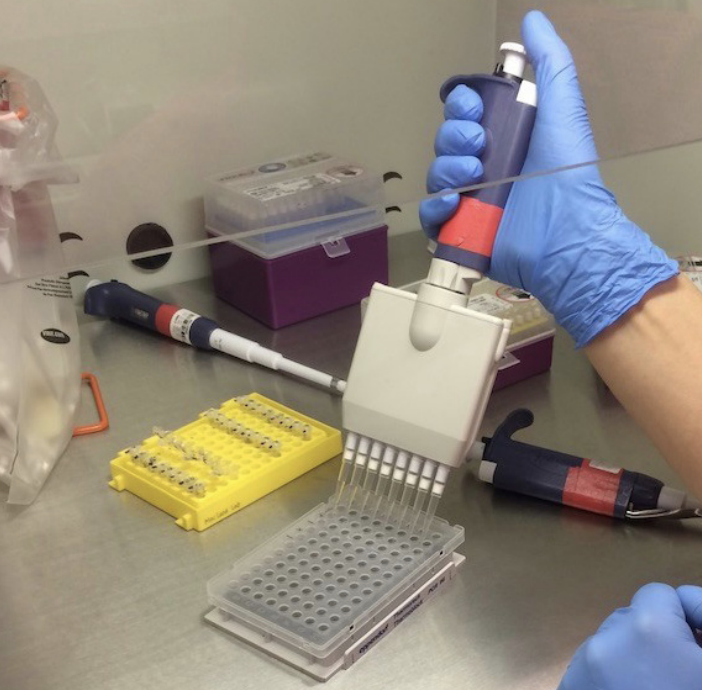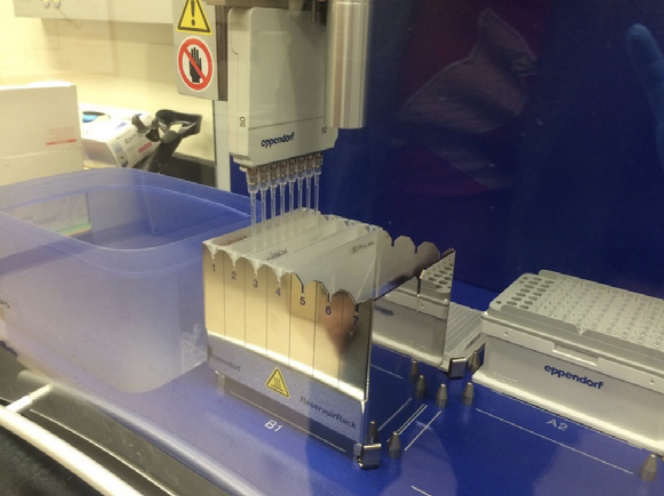Science sleuths: the science that shapes diagnostic tests; PCR: what’s behind commonly used acronym?
The genetic code of life is made up of genes and regulatory elements encoded by DNA. Initially, following the discovery of the double helix structure of DNA in the early 1950s, science struggled to find the appropriate molecular tools to move the field forward. Since then discoveries have come thick and fast as our understanding of DNA and gene structure and function has blossomed.
 While we now take for granted the ability to perform whole genome sequencing, our knowl- edge stands on the foundations of huge scientific research efforts and breakthroughs. One such break- through resulted from a combination of research events that led to the ability to amplify specific targeted segments of DNA using a technique called the Polymerase Chain Reaction, abbreviated PCR. PCR enables small amounts of DNA, previously impossible to detect in a sample, to be specifical- ly amplified to generate quantities many fold, and often many logs, higher in the sample. This greatly facilitates detection and isolation of the targeted DNA sequence using other laboratory methods. If the segment of DNA you are looking for can be characterized as a needle in a haystack, what PCR achieves is to massively increase the number of needles in the haystack. This Nobel Prize winning discovery would forever change the face of science.
While we now take for granted the ability to perform whole genome sequencing, our knowl- edge stands on the foundations of huge scientific research efforts and breakthroughs. One such break- through resulted from a combination of research events that led to the ability to amplify specific targeted segments of DNA using a technique called the Polymerase Chain Reaction, abbreviated PCR. PCR enables small amounts of DNA, previously impossible to detect in a sample, to be specifical- ly amplified to generate quantities many fold, and often many logs, higher in the sample. This greatly facilitates detection and isolation of the targeted DNA sequence using other laboratory methods. If the segment of DNA you are looking for can be characterized as a needle in a haystack, what PCR achieves is to massively increase the number of needles in the haystack. This Nobel Prize winning discovery would forever change the face of science.
What did that mean for the veterinary community?
This gigantic leap forward has enabled advances in diagnostic testing, the discovery of genetic disorders and verifying parentage, to name but a few applications. In terms of diagnostic testing, PCR is routinely used to detect specific disease-associated organisms, such as pathogenic bacteria and viruses. Importantly, these agents can be identified in a sample even when present in tiny numbers.
Previous diagnostic testing methods relied on culturing live bacteria or laboriously isolating viruses, both of which are time consuming and fraught with problems. As such, false negative results and long delays in diagnosis were frequent problems. PCR testing can be performed in a matter of hours and lead to a more rapid diagnosis of disease and timely implementation of appropriate biosecurity measures. For example, most of the diagnostic tests that are currently being used to detect the specific coronavirus that causes COVID-19 are PCR based.
 How does it work?
How does it work?
The polymerase chain reaction refers to a series of repeated steps where specific sequences of DNA are identified and amplified using equally specific synthetic ‘primers.’ Primers are short pieces of DNA, usually about 20 nucleotides long, whose nucleotide sequence provides a perfect base-pairing match to regions on the DNA double helix that flank a site of interest, or target DNA.
This site of interest could be part of a specific bacterial gene or a region that may contain a genetic mutation in a given virus, for example. The sample is heated up to separate the double strand- ed DNA helix and then cooled slightly to allow the primers to hybridize to specific sites on the target DNA. The special polymerase enzyme, which is stable at high temperatures, then synthesizes the corresponding DNA strand, creating a perfect copy – doublingthe number of copies.
To allow more copies to be made, the cycle is repeated. The sample is heated again, primers hybridize to the original sequence plus each of the new copies, and the polymerase enzyme catalyses the synthesis of another new strand of the DNA sequence of interest. In each reaction cycle, the amount of target DNA doubles, thus literally generating a logarithmic amplification. In fact, if the reaction started with just one copy of target DNA, after 40 cycles, more than a trillion copies of the DNA would be synthesized.
Incredibly sensitive technique
This massive amplification process makes PCR an exquisitely sensitive diagnostic test that can detect minute amounts of target DNA in a sample. It can detect DNA from organisms that are alive and those that are dead if the DNA is still intact. This makes for some issues with regard to the interpretation of results. We will be discussing those concerns in future features of the Equine Science Review, so watch this space.
Emma Adam, DVM, PhD, DACVIM, DACVS, based at UK’s Gluck Center and Veterinary Diagnostic Lab, is responsible for research and serves as veterinary industry liaison. Jackie Smith, MSc, PhD, MACE, Dipl AVES, is an epidemiologist based at the UK Veterinary Diagnostic Lab.
